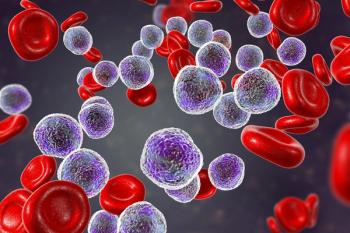
Postoperative Radiotherapy Yields No DFS Benefit in Resected pIIIA-N2 NSCLC
For patients with pIIIA-N2 non–small cell lung cancer, postoperative radiotherapy after complete resection and adjuvant chemotherapy did not positively impact disease-free survival.
Patients with pIIIA-N2 non–small cell lung cancer (NSCLC) receiving adjuvant chemotherapy after complete resection did not experience a disease-free survival (DFS) benefit after undergoing postoperative radiotherapy (PORT), according to data from the randomized phase 3 PORT-C clinical trial (NCT00880971) published in JAMA Oncology.
At a median follow-up of 46.0 months (95% CI, 41.9-51.4), a total of 230 DFS events were observed in the modified intention-to-treat (mITT) population (n = 364). Median DFS for patients in the PORT arm was 22.1 months (95% CI, 14.8-29.3) compared with 18.6 months (95% CI, 14.3-23.0) for patients in the observation arm. The 3-year DFS rate was observed at 40.5% and 32.7% in the PORT and observation arms, respectively. No significant difference was observed between either arms regarding DFS outcomes in the unadjusted analysis (HR, 0.84; 95% CI, 0.65-1.09; P = .20).
“There is no high-level evidence supporting the benefit of PORT with 3D-[conformal radiotherapy/intensity-modulated radiotherapy] after complete resection followed by adjuvant chemotherapy for patients with pIIIA-N2 NSCLC,” the investigators wrote. “In this PORT-C study, PORT did not prolong DFS in the unadjusted analysis in the mITT population.”
There were 394 patients with pIIIA-N2 NSCLC enrolled to the study and randomized to either the PORT (n = 184) or observational arm (n = 180).
Median overall survival (OS) was not reached in the PORT arm and was 81.5 months (95% CI, 61.6-101.4) in the observation arm. Three-year OS rate was 78.3% in the PORT arm and 82.8% in the observational arm (unadjusted HR, 1.02; 95% CI, 0.68-1.52; P = .93)(stratified HR, 0.92; 95% CI, 0.61- 1.39; P = .70).
The 3-year locoregional recurrence–free survival (LRFS) rate was also calculated, resulting a significant difference between the groups at 66.5% and 59.7%, respectively (HR, 0.71; 95% CI, 0.51-0.97; P = .03). Three-year distant metastasis-free survival (DMFS) rates were observed at 42.0% and 38.2% in the PORT and observational arms, respectively (HR, 0.94; 95% CI, 0.72-1.22; P = .62).
Common grade 2 or lower adverse effects (AEs) observed in 55 patients in the PORT arm and 20 patients in the observational arm were radiation esophagitis and radiation pneumonitis. No grade 4 or 5 radiotherapy-related AEs were observed. At the last follow-up point, 97 deaths were recorded, with 94% of deaths in the PORT arm and 89.4% of deaths in the observation arm due to cancer progression.
Eligible patients had histologically confirmed pIIIA-N2 NSCLC and underwent complete resection followed by 4 cycles of adjuvant chemotherapy without a recurrence. Further eligibility requirements included patients ages 18 to 70 years, those with an ECOG performance score of 0 to 1, and patients with less than a 10% weight loss before surgical procedure. Total PORT dosing was recorded at 50 Gy.
“In this randomized clinical trial of patients with pIIIA-N2 NSCLC after complete resection and adjuvant chemotherapy, PORT did not improve DFS, while it did improve LRFS. Further studies are needed to accurately identify the appropriate patients who will optimally benefit from PORT,” the investigators concluded.
Reference
Hui Z, Men Y, Hu C, et al. Effect of Postoperative Radiotherapy for Patients With pIIIA-N2 Non-Small Cell Lung Cancer After Complete Resection and Adjuvant Chemotherapy: The Phase 3 PORT-C Randomized Clinical Trial. JAMA Oncol. Published online June 24, 2021. doi:10.1001/jamaoncol.2021.1910
Newsletter
Stay up to date on recent advances in the multidisciplinary approach to cancer.


















































































